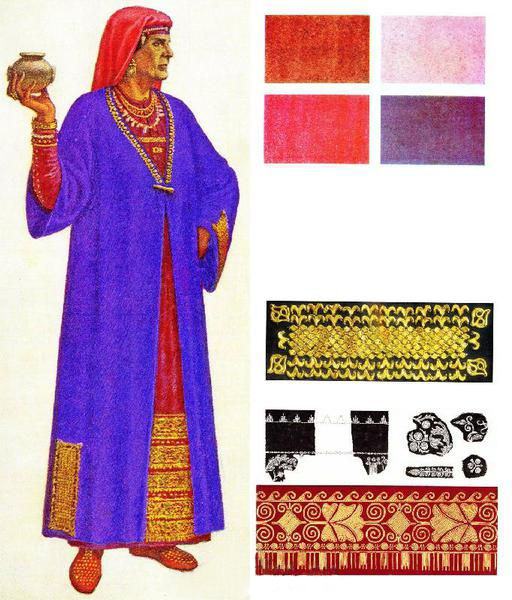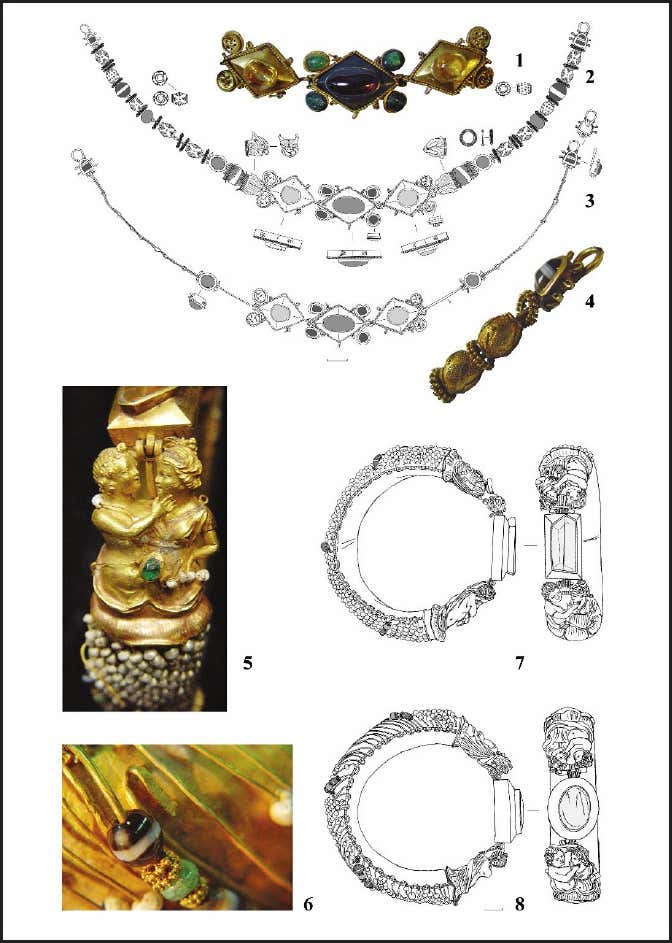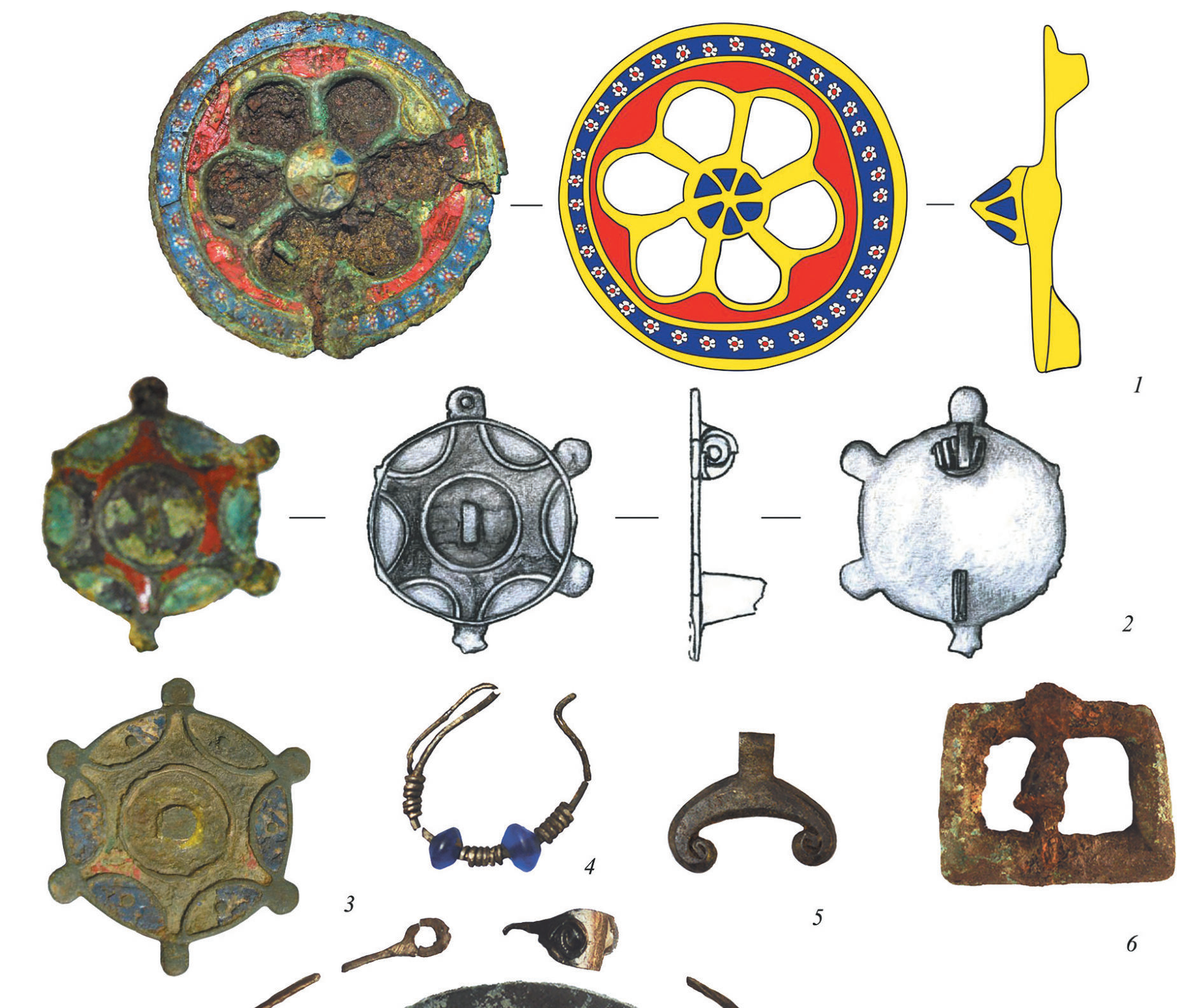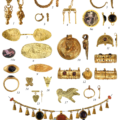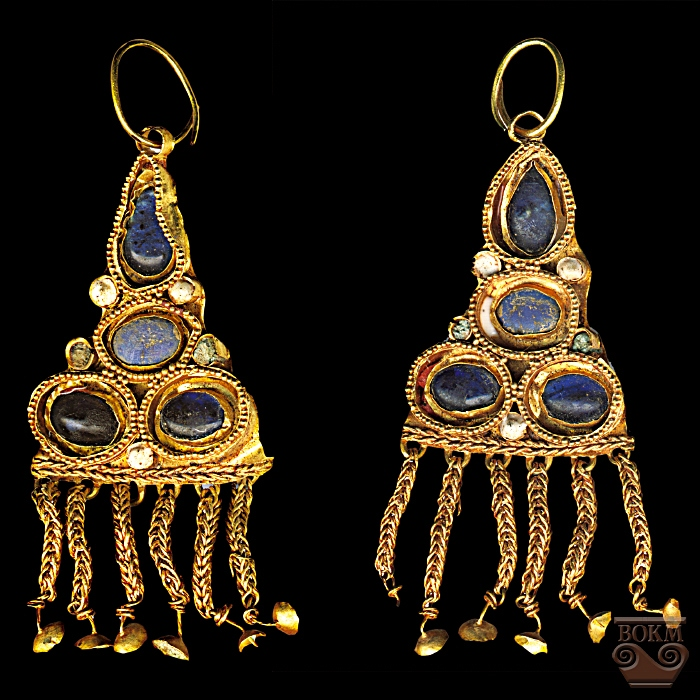Meotian burial. Maikop region, Psenatha [Псенафа] archaeological complex.
In a rich collective burial No. 62 dated to 2nd-1st century BCE an iron candelabra, a handle of a bronze frying pan in the form of a ram’s head, a gold hryvnia, a gold pendant with a chalcedony insert, a diamond-shaped gold fibula, a glass kantharos-skyphos, and a number of other things were discovered.
A gold fibula-brooch in the shape of a rhombus with a carnelian insert in the center from burial 62; 2nd century BCE. 2,85 х 2,2 cm
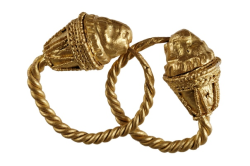

Fragment of a bracelet. 2nd-1st C BCE
Gold, 4,3 х 1,0 х 0,3 cm
Fibula-brooch from barrow 1 Psenafa (outskirts of Maikop), Republic of Adygeya
[Yuri Prokopenko]
Diam. disc 4.15 cm, length with pendants 16.3 cm
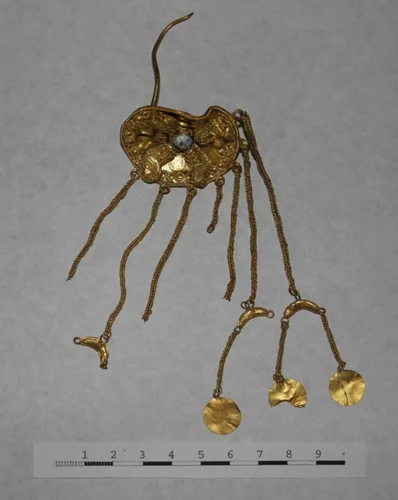
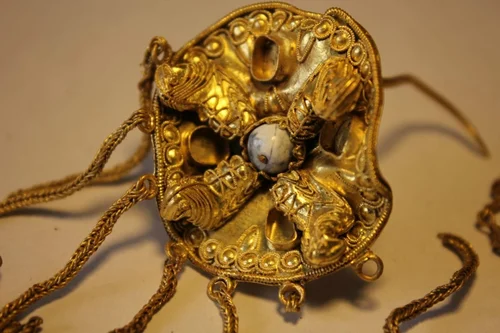
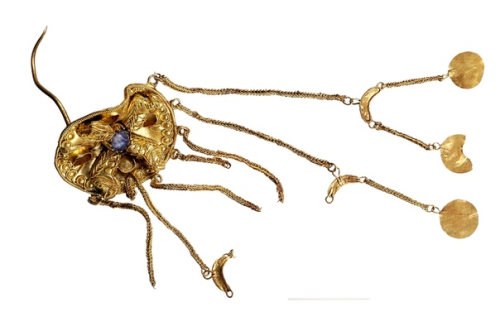
“fibula-brooch with four figurines of animals (rams or horses?) and pendants in the form of crescents and sun disks on chains, discovered in the sanctuary. A chalcedony insert has been preserved in its center, while stones from the other four castes have been lost. For the production of this product, various jewelry techniques were used – filigree, granulation, filigree. Presumably, this product goes back to the Colchis school of jewelry art and has a number of artistic parallels among the products found both in the South and North Caucasus. These are a brooch with animal figurines from Vanya, a randomly found fibula-brooch from Karachay-Cherkessia, now kept in the Stavropol Museum, and a fibula from a private collection in England, presumably originating from the Black Sea region. Fibula-brooch from Psenafa, subjected to deliberate ritual damage, can be preliminarily dated to the 3rd-2nd centuries BCE”
More >> https://colorsandstones.eu/2023/04/07/sarmatian-round-brooches-with-pendants/
The most significant part of the decorations found in the burial ground are beads, pendants and amulets, which were found in almost all female burials, as well as with horse harness. They are made of single color and mosaic polychrome glass, chalcedony, crystal quartz, Egyptian faience and gold.

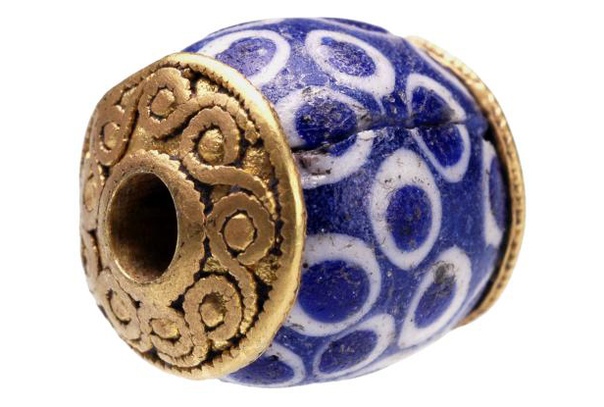
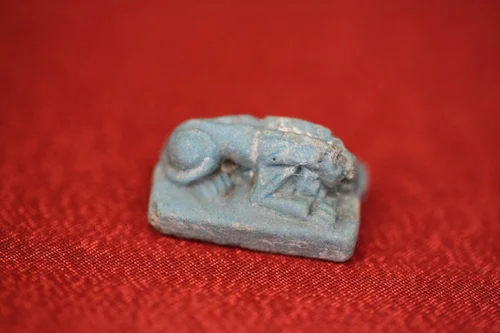
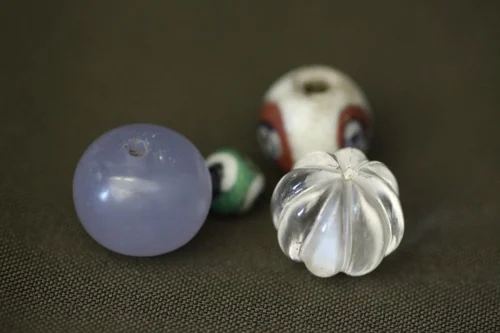

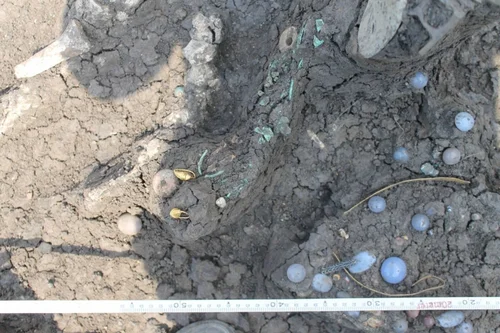
SOURCES
- Fibula-Brooch with Pendants from the Barrow Studied in the Northern Surrounding Areas of Cherkessk; Yuri Prokopenko
https://www.academia.edu - Ю.А. Прокопенко, С.Л. Кравцова; ФИБУЛА-БРОШЬС ПРИВЕСКАМИ ИЗ СОБРАНИЯ СТАВРОПОЛЬСКОГО ГОСУДАРСТВЕННОГО МУЗЕЯ ЗАПОВЕДНИКА https://dspace.ncfu.ru
- Vladimir Erlikh, Древности “Долины яблонь” Каталог выставки. 2014 https://www.academia.edu
- The work of the Caucasian expedition in 2012, an article by Vladimir ERLIKH [Работа Кавказской экспедиции в 2012 г., Владимир ЭРЛИХ] http://www.kavkazoved.info/news/2013/01/28/rabota-kavkazskoj-ekspedicii-v-2012-respublika-adygeja.html
- https://izverzhenie-vulkana.ru/2020/11/psenafa_kompleks_meotskoj_arheologicheskoj_kultury_najdennyj_na_okraine.html
- V.R. Erlikh, A.R. Кantorovich; The Cheek-Pieces with the Unique Image of Feline Predator from Ritual Complex of Psenafa-Site (Adygea) in the Context of the Scythian Animal Style http://irbis-nbuv.gov.ua
- M. Treister, Mold-cast Glass Skyphoi from the Burials of the Nomads of Volga-Don Interfluve and the Participation of the Sarmatians in the Ibero-Parthian War of 35 AD (in Russian with summary in English) https://www.academia.edu




